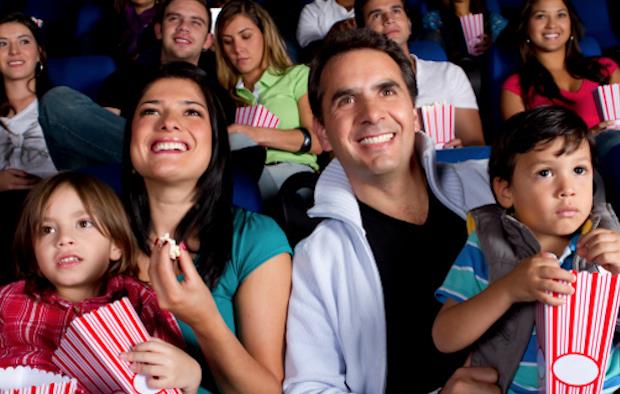“Choosing a movie:” a practical and economic guide to place oneself in the world of cinema
Faced with a wide choice it is very easy to get lost, especially if you do
not have clear criteria that help you look for what you want and decide
amongst the different possibilities.
This is also true when we look into the vast landscape of the cinema: the
offer is so grand, that we risk wasting a lot of time and money on poor
quality entertainment.
Going fumbling, then, without using guides or advice, can lead us to
underestimate some important aspects related to the film world: not all
stories are harmless; some falsify the truth about being human. A film has
the power to “leave its mark” on the mind and in the heart of the viewer. A
film can “tell lies” about who we are and what our good
is, in subtle, hidden ways, thanks to the disruptive power of images and
the communicative power of story-telling.
In short, choosing a film is an action that is anything but simple and
unimportant.
The added value of a “guide” when choosing a film
Placing oneself in the world of cinema, it can be really helpful to make
use of the advice of communication professionals (screenwriters,
communication teachers, TV producers), who have skills in storytelling and
at the same time a reliable and identifiable anthropological perspective.
What if a guide like this already existed? What If there was a sort of
“manual,” written with more than one set of hands by professionals, but
professionals who would have the humility to set apart “personal taste,”
while leaving room for more “common mortal tastes”? Such a guide would help
us, ordinary spectators, choice properly.
Well, such a thing does exist… since 2004.
“Choosing a movie:” a precious book on how to decide to spend free time
Choosing a film
, (edited by Armando Fumagalli and Eleonora Recalcati, Edizioni San Paolo,
Pages: 312, Price: €19.50, year 2018) is a collection of the main films
released in a film season. The last edition examines the 2017-2018 ones.
In the introduction to the book the purpose of the collection is explained:
“The project of a series of volumes of film reviews, inaugurated in 2004,
was born with the simple idea of offering a service to the many people
who love cinema and who want a guide and an orientation to choose a film
according with their tastes and that enriches them on a human and cultural
level, or simply for a healthy personal or family fun.”
There are two basic criteria that guide the work. The first is the
importance attributed to the narrative component of the film, the second
criterion is to evaluate the stories from a point of view rooted in a
Christian anthropology.
Each review contains a plot (without spoilers), an evaluation of the
history and values that it proposes, warns us of problems that may arise
with certain scenes (shocking violence, nude scenes, etc.) and assigns an
overall artistic vote from 1 to 5, to give an immediate favor if you don’t
have the time to read all the information.
The reviewed films
The volume examines 50 films in total: a considerable number – if one
thinks of the work of analysis behind each film – and representative of the
cinematic scene, but at the same time restrained, if you think about how
many films are produced every year all over the world.
After having made an accurate selection, the authors focus in on the most
significant films: on those that have made more discussion or have had
greater appreciation and revenue.
So here we find, for example, a review of the film Call Me By Your Name (by Luca Guadagnino, 2017, with a vote of 2
stars out of 5), which has created much debate for the representation of
the homosexual relationship between a young man and an adolescent. Blockers (by Kay Cannon, 2018), where the theme of virginity is
explored, combined with that of the “first time,” with enormous
superficiality.
Not many films are considered “excellent,” which conquer all 5 stars. Among
these there is Black Panther (by Ryan Coogler, 2018), set in an
African civilization in its early days, appreciated for the theme of
openness to the other – of individual and collective responsibility – which
are opposed to violent ideology.
Instead, there are many “discrete” films, those that could have further
developed their potential and won 3 stars: this is the case, for example,
of In Due Sotto il Burqa (Cherchez la Femme!, by Sou
Abadi, 2017), a comedy which has the merit of tackling the delicate theme
of integration between Western society and Muslims in France in a appealing
way, but which at times falls into superficiality.
And then there are “good” films, those that “do not disappoint” and earn
one by one their 4 stars: this is the case of Cars 3, (an animated
film by Brian Fee, 2017), which highlights, once again, fundamental values
such as friendship, sacrifice, and love.
To learn more, however, you’ll just have to buy the volume… and, if you
want to deepen your film culture, you can also order the volumes on the
films of the previous years.
“Choosing a film:” credibility of the authors and ease of use
The professional profiles of the authors – written in detail and included
in the book – guarantee the seriousness of the work done.
The volume, moreover, which presents itself as a sort of “dictionary” of
the most relevant films, is very easy to consult thanks to the indexes,
both sorted alphabetically and by merits (based on the number of stars
assigned).
It was a job well done, from different points of view, useful, and easy to
handle. We highly recommend it!














